India-Canada trade deal: The new chapter begins
Through the India-Canada trade deal, it is expected that the two countries will work to enhance cooperation in sectors such as agro-products, pharmaceuticals, chemicals, footwear, textiles, automobiles, energy, electronics, minerals, and metals, information technology, urban development, tourism and AYUSH.
- India and Canada have resumed formal engagement and participation towards a Comprehensive Economic Partnership Pact (CEPA) after a span of nearly five years. They are also considering an interim agreement or Early Progress Trade Agreement (EPTA) to speed up mutual commercial gains.
- It is expected that the upcoming interim agreement would majorly cover areas like high level commitments in goods, services, rules of origin, dispute settlement, technical barriers to trade, sanitary and phytosanitary measures.
- India’s rapidly expanding economy, as well as the Government’s continued commitment to liberalizing the country’s investment regime, will present significant opportunities for Canadian investors in a variety of sectors, including financial services, infrastructure, information technology, life sciences, and natural resources.
- In the post-COVID times, the priority of both the countries is to strive towards the economic growth. The India-Canada trade deal trade deal brings an opportune moment for both the partners to establish a long-term trade and economic partnership.
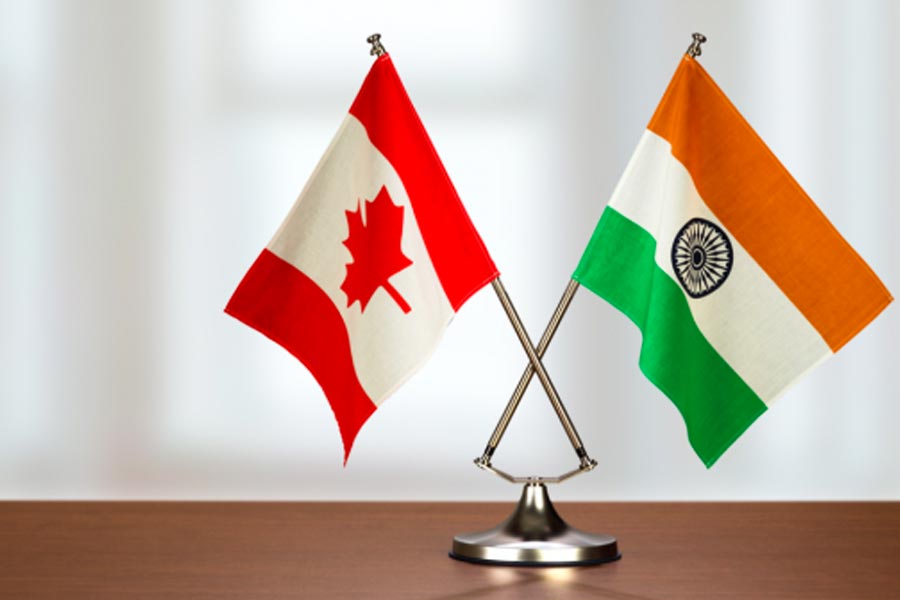
India has achieved highest monthly value of merchandise export in March 2022 amounting US$ 40.38 billion, registering an increase of approximately 15% over March 2021. This surge in exports displays the country’s improved manufacturing strength along with the blooming of an entrepreneurial spirit in the economy. To make India a US$ 5 trillion economy by 2025, the Indian Government is undertaking a multi-prolonged pathway. At the one hand, it is focusing on improving the supply side for enhanced national competitiveness and on the other, from the demand side, it is aiming at expanding international market access. For strengthening of export ecosystem, the Government has undertaken various initiatives and policies support like PLI, RoDTEP, PM Gati Shakti, TIES etc. To get higher access in global markets, India is engaging and negotiating various trade deals, especially with the large economies like Australia, Canada, UK, EU etc.
Mary Ng, Canada’s Trade Minister, travelled to India in March 2022 to meet with Piyush Goyal, India’s Commerce and Industry Minister, to resume talks on India-Canada trade deal (FTA). Both parties decided for formal engagement and participation towards a Comprehensive Economic Partnership Pact (CEPA), as well as consider an interim agreement or Early Progress Trade Agreement (EPTA) to speed up mutual commercial gains. An interim trade deal has specific goals such as elimination or reduction of duties and market access on limited number of items. It is expected that the upcoming interim agreement would majorly cover areas like high level commitments in goods, services, rules of origin, technical barriers to trade, sanitary and phytosanitary measures.
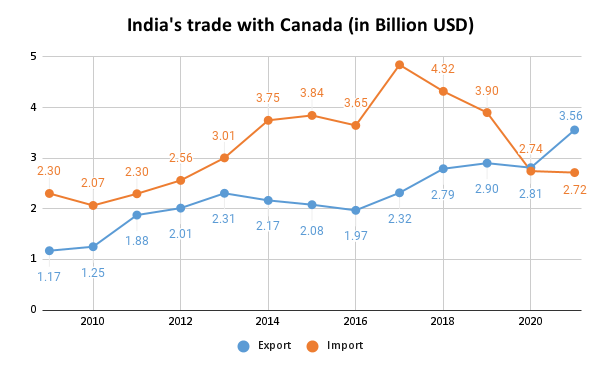
Source: Authors’ compilation from WITS database
India & Canada as trade partners
Over the years, India has emerged as one of the most important trading partners for Canada. In the year 2021, India’s total merchandise exports to Canada stood at US$ 3.56 billion, increasing from US$ 1.17 billion in 2009. India’s principal exports during this period were jewelry, cotton yarn, organic chemicals, coffee, spices, iron and steel articles, textiles, carpets, floor spreads, processed foods, marine products, footwear, readymade garments, rice, cereals etc. India’s principal imports were industrial chemicals, newsprint, peas, copper, asbestos, iron scrap, minerals, wood pulp, etc. Though the quantum of bilateral trade flows between India and Canada is not massive, for the past few years the products like pharmaceuticals, organic chemicals, gems and jewelry, products of iron, steel and flat-rolled steel and ferro alloys has aided India to maintain positive trade balance with Canada.
On the investments front, FDI inflows from Canada to India reached around US$ 763.58 billion during April 2000 to March 2021. Particularly in the post COVID-19 times, Canada may gain from investing in India, given its innovation capabilities in R&D, finance, and other related fields. Canadian dominance in services sectors like consulting and engineering, as well as a burgeoning presence in domains like education, software development, and financial services, are reflected in the growth of service sector revenues. India’s rapidly expanding economy, as well as the government’s continued commitment to liberalizing the country’s investment regime, will present significant opportunities for Canadian investors in a variety of sectors, including financial services, infrastructure, information technology, life sciences, and natural resources. Collaboration in science and technology, as well as innovation and educational ties, are major areas of opportunity for Canadian businesses.
Furthermore, through the India-Canada trade deal, it is expected that the two countries will work to enhance cooperation in sectors such as agro-products, pharmaceuticals, chemicals, footwear, textiles, automobiles, energy, electronics, minerals, and metals, information technology, urban development, tourism and AYUSH. Over the years, Canada has become one of the leading choices of Indian students and professionals given the relatively easy provisions of visas, compared to entry in the US. In the first 10 months of year 2021, Canada has welcomed 96,660 permanent residents from India. Therefore, for India, in the services sector the movement of natural persons/ professionals is relatively of large interest.
In the post-COVID times, the priority of both the countries is to recover the economic growth, this trade deal brings an opportune moment for both to establish a long-term trade and economic partnership. Both the economies maintain energizing complementarities in each other’s market based on trade direction and complementarities. Focusing on trade and investments will boost both countries’ involvement in each other’s economies. Further India’s large and talented people pool is well aligned with Canada’s technological skills, while Canada can support India with infrastructural needs, particularly in the logistics, farm equipment, and construction sectors. Also, the sectors of digital space like fintech, health infrastructure and industrial innovations open the room for future collaborations for Canadian companies in India.
- Dr. Javeria Maryam is working as an Associate Public Policy and Research at Shangrila Corporate Services.
- Suvayan Neogi is working as an Economist at Federation of Indian Mineral Industries.
Views expressed are personal to authors.








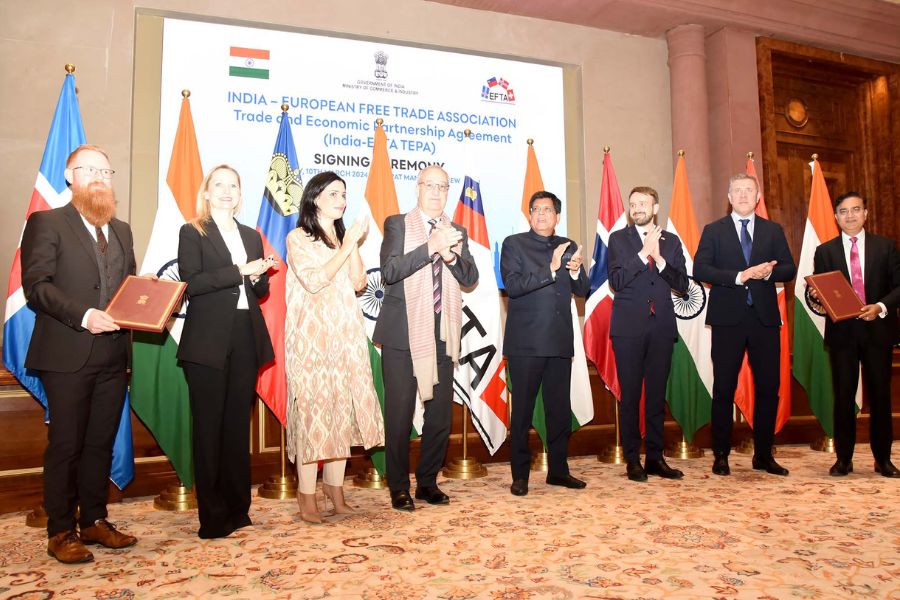

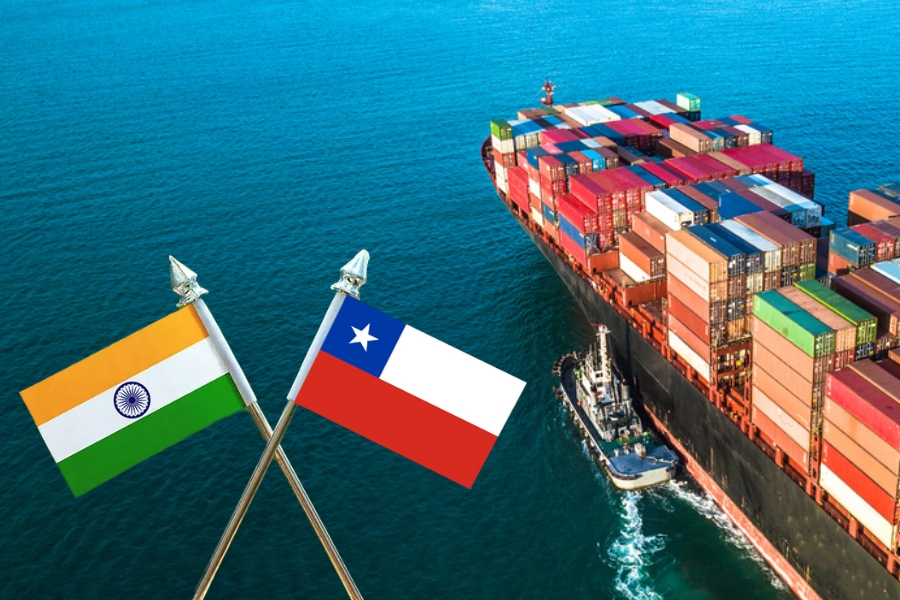
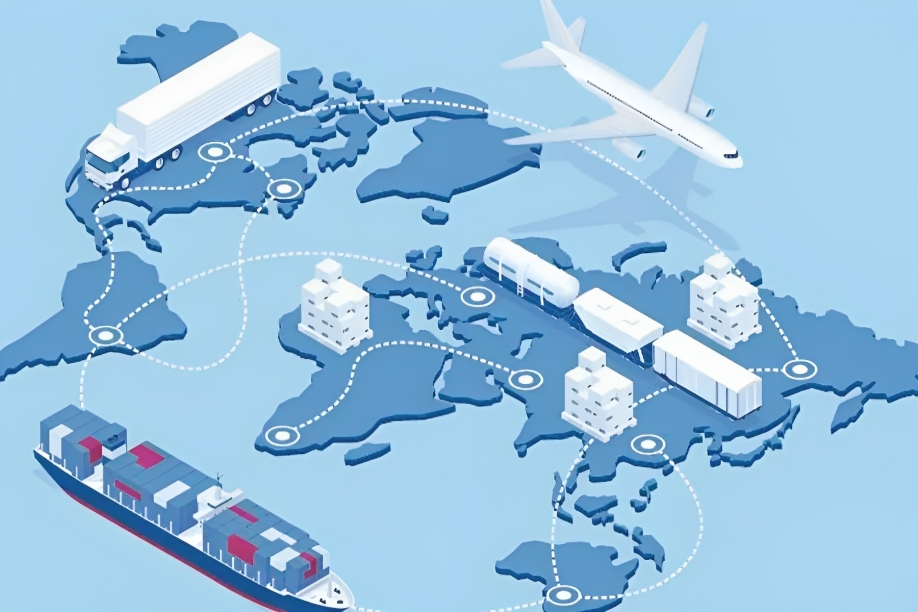

Very good informative write-up
Excellent sharing Mam